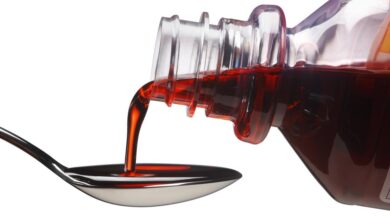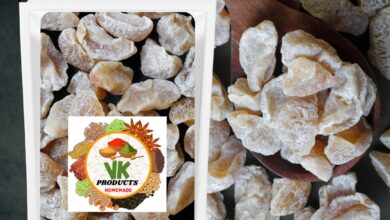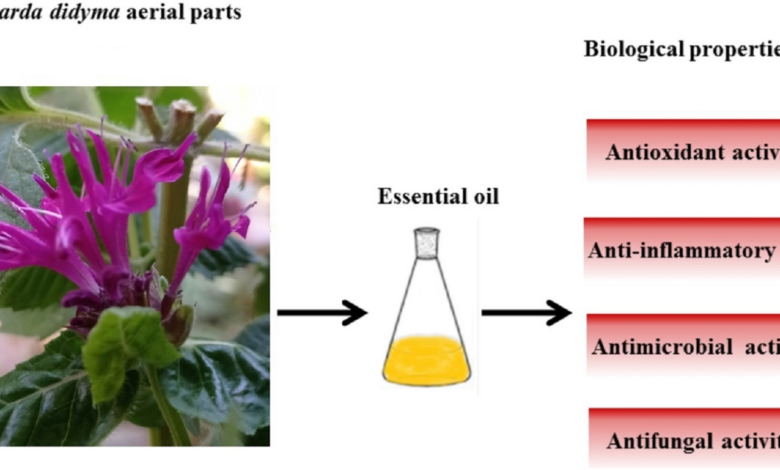
How Does Calendula Heal Wounds and Improve Skin Hydration?
How does calendula heal wounds and improve skin hydration? This vibrant orange flower, long celebrated for its medicinal properties, holds a fascinating secret to healthier skin. From its potent anti-inflammatory compounds to its remarkable ability to boost skin hydration, calendula offers a natural path to wound healing and improved skin health. This post dives deep into the science behind calendula’s healing power, exploring its chemical composition, efficacy, and various applications.
We’ll uncover how calendula’s bioactive components work their magic, comparing its effectiveness to other traditional remedies and modern treatments. We’ll also discuss the best ways to use calendula for optimal results, addressing potential side effects and offering practical advice for safe and effective application. Get ready to discover the amazing potential of this humble flower!
Calendula’s Chemical Composition and Wound Healing Properties
Calendula, scientifically known asCalendula officinalis*, has been used for centuries to promote wound healing and soothe irritated skin. Its effectiveness stems from a complex interplay of bioactive compounds that work synergistically to achieve these therapeutic effects. Understanding these compounds and their mechanisms is key to appreciating calendula’s place in both traditional and modern wound care.
Key Bioactive Compounds and Their Mechanisms of Action
Calendula’s therapeutic benefits are largely attributed to its rich composition of triterpenoid saponins, carotenoids, flavonoids, and polysaccharides. These compounds work together to exert various effects crucial for wound healing. For instance, triterpenoid saponins, such as calendulosides, possess anti-inflammatory and antimicrobial properties. They help to reduce inflammation, a key factor in delaying wound closure, and inhibit the growth of bacteria that can impede healing.
Carotenoids, notably lutein and zeaxanthin, are potent antioxidants that protect cells from damage caused by free radicals, promoting tissue regeneration. Flavonoids contribute to the anti-inflammatory and antioxidant effects, while polysaccharides promote hydration and support tissue repair.
Anti-inflammatory Effects and Wound Closure
Inflammation is a natural part of the wound healing process, but excessive or prolonged inflammation can hinder healing. Calendula’s anti-inflammatory properties are crucial in managing this aspect of wound repair. The triterpenoid saponins and flavonoids in calendula inhibit the production of inflammatory mediators like prostaglandins and cytokines, thus reducing swelling, redness, and pain. This reduction in inflammation leads to a more controlled and efficient healing process, resulting in faster wound closure and reduced scarring.
Studies have shown that topical application of calendula extract can significantly reduce inflammation and improve wound healing time compared to control groups.
Comparison with Other Traditional Wound Healing Agents
Calendula’s efficacy in wound healing is comparable to, and in some cases surpasses, other traditional wound healing agents. While honey, aloe vera, and comfrey are also known for their wound-healing properties, calendula stands out due to its potent anti-inflammatory action and broad-spectrum antimicrobial activity. Honey’s effectiveness is largely attributed to its high sugar content and hydrogen peroxide production, which inhibits bacterial growth.
Aloe vera contains various compounds with anti-inflammatory and antimicrobial properties. Comfrey, however, contains pyrrolizidine alkaloids, which are potentially hepatotoxic, limiting its widespread use. Calendula offers a safer and equally effective alternative, particularly for superficial wounds and skin irritations.
Chemical Composition Comparison of Wound Healing Herbs
| Compound | Calendula | Aloe Vera | Honey |
|---|---|---|---|
| Triterpenoid Saponins | High | Low | Absent |
| Carotenoids | High | Moderate | Absent |
| Flavonoids | Moderate | Moderate | Absent |
| Polysaccharides | Moderate | High | High |
Calendula’s Impact on Skin Hydration: How Does Calendula Heal Wounds And Improve Skin Hydration
Calendula’s soothing properties extend beyond wound healing; it’s a surprisingly effective moisturizer, playing a crucial role in maintaining healthy skin hydration levels. Its ability to both hydrate and protect the skin barrier makes it a valuable ingredient in skincare products designed for dry, irritated, or sensitive skin.Calendula’s moisturizing action stems from its chemical composition, particularly the presence of flavonoids and triterpenoids.
These compounds work synergistically to improve skin hydration in several ways. Flavonoids possess antioxidant properties that protect the skin from free radical damage, which can contribute to dryness and premature aging. Meanwhile, triterpenoids have anti-inflammatory effects that reduce irritation, a common cause of skin barrier disruption and subsequent moisture loss.
Calendula’s Role in Skin Barrier Function
A healthy skin barrier is essential for maintaining optimal hydration. The skin barrier acts like a protective shield, preventing water loss and protecting against external irritants. Calendula helps strengthen this barrier by reducing inflammation and promoting the regeneration of skin cells. By minimizing inflammation, calendula allows the skin to repair itself more effectively, leading to a more robust and less permeable barrier.
This, in turn, prevents moisture from escaping and keeps the skin hydrated for longer periods. This effect is particularly beneficial for individuals with conditions like eczema or psoriasis, where the skin barrier is often compromised.
Calendula’s Effect on Skin Hydration in Different Contexts
While extensive, large-scale clinical trials are still limited, several studies have shown promising results regarding calendula’s hydrating effects. For instance, some studies on individuals with dry skin have demonstrated that topical application of calendula extracts leads to significant improvements in skin hydration levels, as measured by instruments such as corneometers. Similarly, research on individuals with eczema suggests that calendula creams can help soothe inflammation and improve skin hydration, leading to a reduction in dryness and itching.
These studies highlight calendula’s potential as a natural remedy for various skin conditions characterized by dryness and compromised barrier function. Further research with larger sample sizes is needed to definitively confirm these observations and establish standardized treatment protocols.
Applying Calendula for Improved Skin Hydration
To effectively utilize calendula for improved skin hydration, follow these steps:
The application method depends on the chosen calendula product (cream, lotion, oil). Always perform a patch test before widespread application to check for any allergic reactions.
- Cleanse the skin thoroughly with a gentle cleanser.
- Pat the skin dry, avoiding harsh rubbing.
- Apply a small amount of calendula cream, lotion, or oil to the affected area.
- Gently massage the product into the skin until it is fully absorbed.
- Reapply as needed, especially after washing or exposure to harsh environments.
Calendula’s Antibacterial and Antifungal Properties in Wound Care
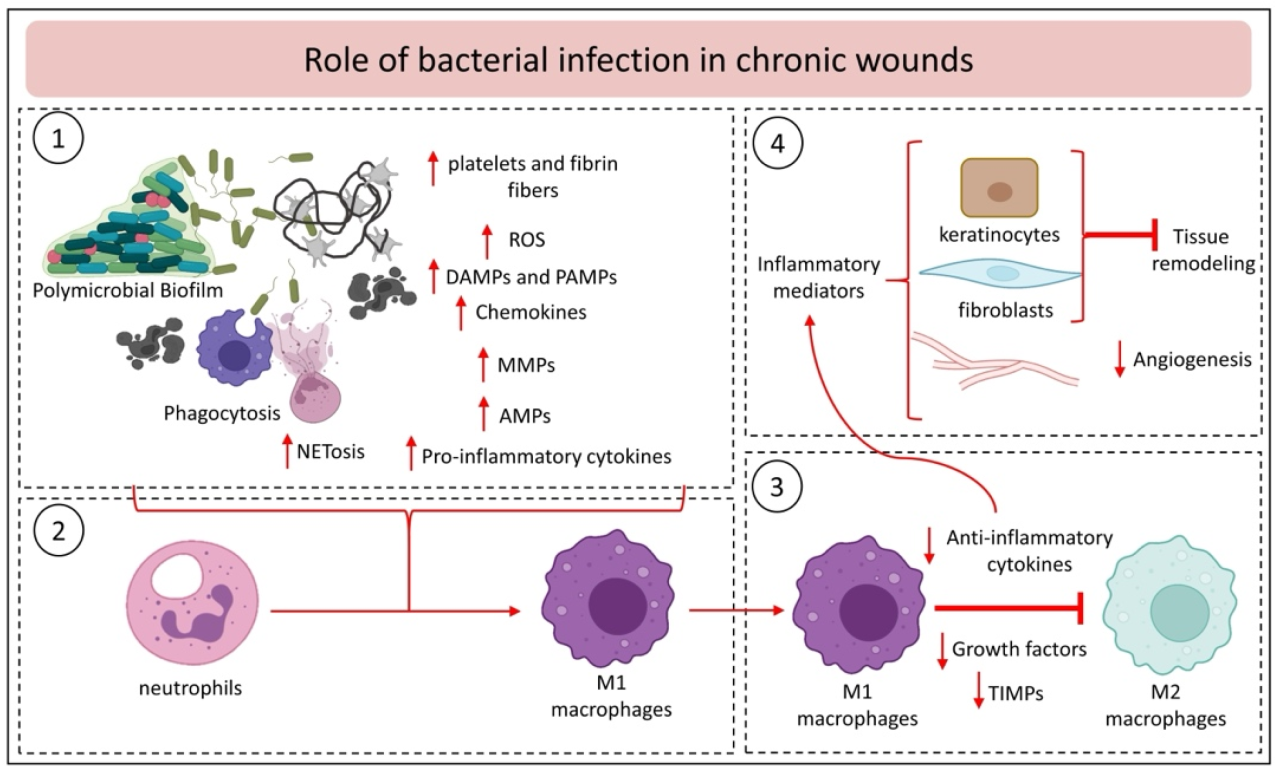
Source: mdpi-res.com
Calendula’s therapeutic applications extend beyond wound healing and skin hydration; its antimicrobial properties play a significant role in preventing infection and promoting faster recovery. The plant’s effectiveness against a range of bacteria and fungi makes it a valuable addition to wound care regimens, either as a standalone treatment or in conjunction with other antimicrobial agents. This section delves into the specifics of calendula’s antimicrobial activity and its potential synergistic effects with other treatments.
Calendula extracts have demonstrated activity against various microorganisms implicated in wound infections. The specific bacteria and fungi inhibited vary depending on the extraction method and concentration used, highlighting the importance of standardized preparation methods for consistent therapeutic outcomes. While calendula isn’t a replacement for conventional antiseptics, its antimicrobial properties contribute to a holistic approach to wound care.
Calendula’s amazing healing properties come from its anti-inflammatory and antiseptic compounds, speeding wound repair and boosting skin hydration. It’s fascinating how natural remedies work, and it makes me wonder about other preventative health measures; for instance, did you know that research suggests can eye test detect dementia risk in older adults ? Returning to calendula, its soothing effects are truly remarkable for promoting healthy, hydrated skin.
Comparison of Calendula’s Antimicrobial Activity with Commercial Antiseptics
Numerous studies have compared the antimicrobial efficacy of calendula extracts to commercially available antiseptic agents like povidone-iodine and chlorhexidine. While calendula generally exhibits a lower potency than these strong antiseptics, it demonstrates comparable effectiveness against certain microorganisms, particularly when used in conjunction with other wound-healing agents. The milder nature of calendula also makes it suitable for sensitive skin and chronic wounds, minimizing the risk of irritation associated with stronger antiseptics.
Direct comparisons are challenging due to variations in study methodologies and calendula extract preparations. However, the overall consensus suggests calendula offers a gentler, yet effective, antimicrobial contribution.
Synergistic Effects of Calendula with Other Antimicrobial Agents, How does calendula heal wounds and improve skin hydration
The potential for synergistic interactions between calendula and other antimicrobial agents is an exciting area of research. Preliminary findings suggest that combining calendula with conventional antiseptics or antibiotics may enhance their effectiveness and broaden their spectrum of activity. This synergistic effect could be attributed to calendula’s ability to modulate the immune response and promote wound healing, creating a more favorable environment for antimicrobial agents to work.
Further research is needed to fully elucidate these synergistic mechanisms and optimize combination therapies.
Antimicrobial Activity of Calendula Extracts
The table below summarizes the antimicrobial activity of calendula extracts against various microorganisms, categorized by effectiveness level. It’s important to note that the effectiveness can vary depending on the extraction method, concentration, and specific calendula species used. This information should not be interpreted as a definitive guide for self-treating infections; always consult a healthcare professional for wound care advice.
| Microorganism Type | Specific Microorganism | Effectiveness Level | Notes |
|---|---|---|---|
| Bacteria | Staphylococcus aureus | Moderate | Effectiveness varies depending on extract preparation. |
| Bacteria | Pseudomonas aeruginosa | Low to Moderate | Generally less effective than against S. aureus. |
| Bacteria | Escherichia coli | Low | Limited evidence of significant activity. |
| Fungi | Candida albicans | Moderate | Shows promise in preventing fungal infections. |
| Fungi | Trichophyton rubrum | Low to Moderate | Further research needed to confirm effectiveness. |
Calendula in Different Topical Applications for Wound Healing and Hydration
Calendula’s versatility extends beyond its individual components; its effectiveness is significantly enhanced through various topical applications. The formulation of calendula into different products influences its delivery, absorption, and ultimately, its therapeutic impact on wounds and skin hydration. Understanding these formulations is key to harnessing calendula’s full potential.
Calendula-Based Product Examples
A wide range of calendula-based products cater to diverse wound healing and skin hydration needs. These products leverage calendula’s properties in different ways, offering varying levels of potency and ease of application.
- Calendula Creams: These are typically oil-in-water emulsions, offering a balance of hydration and absorption. They often incorporate additional emollients and humectants to boost skin hydration. Calendula creams are suitable for minor wounds, dry skin, and irritated skin.
- Calendula Ointments: Ointments are oil-based, providing a thicker, more occlusive barrier. This makes them ideal for protecting wounds from further irritation and promoting moisture retention. They are well-suited for treating dry, cracked skin and deeper wounds that require a protective layer.
- Calendula Oils: These are simple preparations, often involving maceration or infusion of calendula flowers in a carrier oil (like olive oil or jojoba oil). They are excellent for massage, promoting blood circulation and soothing inflammation. They can be applied to minor wounds, burns, and areas of dryness.
- Calendula Tinctures: These are alcohol-based extracts of calendula, often used as a base for other topical preparations or diluted for direct application to minor wounds. The alcohol acts as a preservative and can help to disinfect the area.
- Calendula Salves: These are similar to ointments but typically use beeswax or other natural waxes to create a firmer, more protective barrier. They are often preferred for chapped lips, minor cuts, and eczema.
Preparation Methods for Calendula Topical Applications
The preparation method significantly impacts the final product’s quality and efficacy. Careful attention to detail is crucial to ensure a safe and effective product.
- Infusion/Maceration of Calendula Oil: This involves steeping calendula flowers in a carrier oil for several weeks, allowing the oil to extract the active compounds. This method is simple but requires patience. The oil is then strained and stored.
- Tincture Preparation: Calendula flowers are submerged in high-proof alcohol, usually vodka or grain alcohol, for several weeks, shaking regularly. The alcohol extracts the active components. The tincture is then filtered and stored in a dark, cool place.
- Cream and Ointment Preparation: These usually involve combining calendula extracts (oil or tincture) with emulsifiers, emollients, and preservatives in a controlled environment. This requires more technical expertise and often involves specialized equipment.
Efficacy and Suitability of Different Calendula Formulations
The choice of calendula formulation depends heavily on the specific wound type and skin condition.
- Minor wounds (cuts, scrapes): Calendula creams, oils, or salves are generally suitable due to their ease of application and soothing properties.
- Burns (minor): Calendula oils and creams, applied after initial cooling, can help soothe the pain and promote healing.
- Diaper rash: Calendula creams or ointments, chosen for their gentle nature and protective barrier, can provide relief.
- Eczema and psoriasis: Calendula creams and ointments, potentially combined with other soothing ingredients, can help manage inflammation and dryness.
- Infected wounds: While calendula possesses antibacterial properties, it’s crucial to consult a healthcare professional for infected wounds. Using calendula alongside appropriate medical treatment might be considered, but it shouldn’t replace professional medical care.
Flowchart for Selecting an Appropriate Calendula Product
The following flowchart Artikels the decision-making process for selecting a suitable calendula product:[Imagine a flowchart here. The flowchart would start with a box asking “What is the skin condition/wound type?”. This would branch to different boxes representing various conditions (minor wounds, burns, eczema, etc.). Each condition box would then branch to boxes suggesting appropriate calendula formulations (cream, ointment, oil, etc.).
Finally, each formulation box would lead to a “Product Selection” box.] For example, a minor wound might lead to cream or oil, while eczema might lead to a cream or ointment, and a severe burn would recommend consulting a doctor before using any calendula product.
Potential Side Effects and Precautions When Using Calendula

Source: dreamstime.com
Calendula, while generally considered safe, can cause adverse reactions in some individuals. Understanding potential side effects and taking appropriate precautions is crucial for safe and effective use. This section details potential risks and offers guidelines for minimizing them.Allergic reactions to calendula are possible, although relatively uncommon. These can manifest as contact dermatitis, characterized by itchy rashes, redness, swelling, and blistering at the application site.
In severe cases, a more widespread allergic reaction, including difficulty breathing or swelling of the face, can occur. Individuals with known allergies to plants in the daisy family (Asteraceae) should exercise particular caution, as calendula belongs to this family. Pre-testing a small amount of calendula product on an inconspicuous area of skin before widespread application is always recommended.
Precautions for Open Wounds and Sensitive Skin
While calendula is often used for wound healing, it’s crucial to use it cautiously on open wounds. The risk of infection is always present, and calendula, while possessing antibacterial properties, doesn’t replace proper wound care. Avoid applying calendula to deep wounds or those showing signs of infection (e.g., increased pain, swelling, pus, or redness). Always consult a healthcare professional for the treatment of significant wounds.
For individuals with sensitive skin, a patch test is essential before widespread application. Start with a diluted solution or a product with a low calendula concentration to minimize the risk of irritation. If irritation occurs, discontinue use immediately.
Guidelines for Safe and Effective Use of Calendula-Based Products
Safe and effective use of calendula involves careful consideration of product selection, application method, and monitoring for adverse reactions. Choose high-quality products from reputable manufacturers. Look for products that list the calendula concentration clearly. Always follow the manufacturer’s instructions for application. Avoid prolonged or excessive application, as this can increase the risk of irritation.
If you experience any adverse reactions, such as redness, itching, or swelling, discontinue use and consult a healthcare professional. Remember that calendula is not a substitute for medical treatment, and it shouldn’t be used to treat severe or infected wounds without professional guidance.
Appearance of Calendula-Based Creams
Calendula creams typically have a distinct appearance. The texture is usually smooth and creamy, ranging from slightly thick to relatively thin depending on the formulation. The color can vary, often ranging from a pale, yellowish-orange to a deeper, more intense orange hue, reflecting the concentration of calendula extract. The scent is often subtly herbal and slightly floral, although this can vary depending on the other ingredients in the product.
Some products may have added fragrances, masking or enhancing the natural calendula scent. It’s important to note that the color and scent alone are not definitive indicators of quality or effectiveness. Always check the ingredient list to verify the presence and concentration of calendula extract.
Clinical Evidence and Research on Calendula’s Efficacy
While anecdotal evidence and traditional use of calendula for wound healing and skin hydration abound, the scientific backing needs further investigation. However, a growing body of research provides some insights into its effectiveness, although more rigorous studies are needed to solidify these findings. This section will summarize key findings from existing clinical trials and highlight areas requiring further research.
Several studies have explored calendula’s impact on wound healing. Many of these studies have focused on its effectiveness in treating venous leg ulcers, a common and challenging wound type. Results have been somewhat mixed, with some studies showing significant improvement in wound healing rates compared to placebo or standard treatments, while others have shown no significant difference. The variability in results may be attributed to differences in study design, calendula preparation (extract concentration, formulation), and patient populations.
For example, some studies utilized a specific calendula extract in a particular ointment base, while others employed different preparations. This highlights the need for standardization in research methodologies to obtain more conclusive results.
Summary of Key Findings from Clinical Trials
A meta-analysis of several clinical trials examining calendula’s effect on wound healing revealed a trend toward improved healing rates in some studies, particularly for venous leg ulcers. However, the quality of the included studies varied, and more high-quality, randomized controlled trials are needed to confirm these findings and establish the optimal dosage and formulation of calendula for wound healing. The studies often reported a reduction in inflammation and pain associated with wound healing, suggesting a potential anti-inflammatory effect of calendula.
This anti-inflammatory action likely contributes to its overall wound-healing benefits.
Areas Requiring Further Research
Despite some promising results, several areas require further investigation to fully understand calendula’s therapeutic potential. Firstly, standardized preparations of calendula extracts are crucial for reproducible results across different studies. This involves defining the exact concentration of active compounds in the extract and ensuring consistent formulation across trials. Secondly, more research is needed to clarify the optimal application method, frequency, and duration of calendula treatment for various wound types and skin conditions.
Finally, long-term safety and efficacy studies are essential to assess any potential adverse effects and to determine the long-term benefits of calendula use.
Interpreting Results of Clinical Studies on Calendula
Interpreting clinical studies on calendula requires careful consideration of several factors. The sample size of the study is crucial, as larger samples provide more statistically robust results. The study design – randomized controlled trials are generally considered the gold standard – is also vital. Bias can influence the results, so understanding the study methodology and potential sources of bias is important.
Finally, the specific calendula preparation used in the study should be noted, as different preparations may have varying levels of active compounds and thus different effects. Looking for published studies in peer-reviewed journals ensures a higher level of quality and rigor.
Ultimate Conclusion
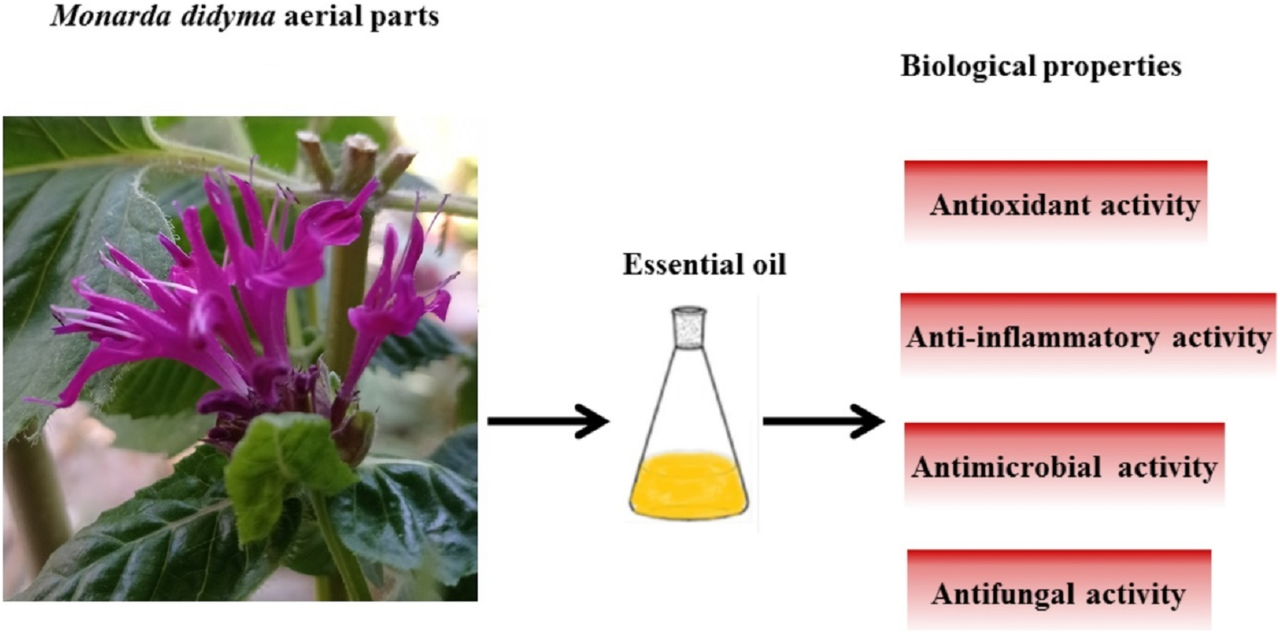
Source: cloudfront.net
Calendula, with its remarkable blend of anti-inflammatory, antimicrobial, and moisturizing properties, presents a compelling natural solution for wound healing and skin hydration. While further research is always welcomed, the existing evidence strongly supports calendula’s efficacy in various topical applications. By understanding its mechanisms of action and potential side effects, we can harness the power of this versatile plant to promote healthier, more radiant skin and faster wound recovery.
So, next time you’re looking for a natural approach to skin care, remember the healing touch of calendula.
Essential FAQs
Is calendula safe for all skin types?
While generally safe, some individuals may experience allergic reactions. A patch test is recommended before widespread use, especially on sensitive skin.
Can I use calendula on open wounds?
It’s best to consult a doctor before applying calendula to deep or infected wounds. For minor cuts and scrapes, calendula can promote healing but ensure the wound is clean first.
How long does it take to see results from using calendula?
Results vary depending on the condition and individual response. You may notice improvements in wound healing and skin hydration within a few days to several weeks of consistent use.
Where can I buy calendula products?
Calendula creams, ointments, and oils are widely available at health food stores, pharmacies, and online retailers. Look for products with high-quality calendula extract.

